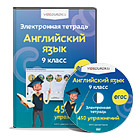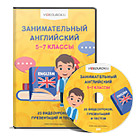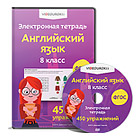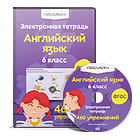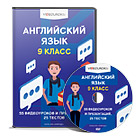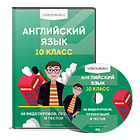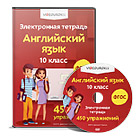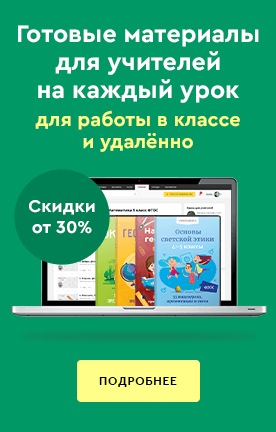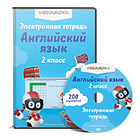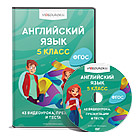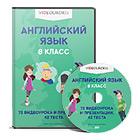| Presentation and practice
L9
L9
S1
L1
L9
L2
R3 | Step 1 Family Members Pupils’ books closed. Put up the My Family poster on the board. Point to each member of the family, one at a time, and present them. The pupils repeat, chorally and/or individually. Point to each member in random order. Ask individual pupils to say the word. Ask the rest of the class for verification. Elicit/Present the word brother.
Pupils’ books open. Play the CD. The pupils listen, point to the pictures and repeat the words. Play the CD again pausing after each word. The pupils repeat, chorally and/or individually. Refer the pupils to the picture and explain the activity. Allow the pupils some time to complete the activity. Then the pupils in the role of Liam point to the family members and present them. Explain to the pupils that they can refer to the sentence at the bottom of the page in the Pupil’s Book for help.
|
My Family Poster
Track 19 CD1
|
|
| Step 2 My family song! Point to the characters, gesture with your hand and say: Come and meet my family! The pupils repeat after you. Then point to each corresponding character while saying: Mummy, Daddy, Lilly and me (pointing to yourself). The pupils repeat after you. Follow the same procedure to present the rest of the song.
Play the CD. The pupils listen to the song. Divide the pupils into two groups and assign a verse to each group. Play the song again for the groups to sing their assigned verses. Time permitting, play the song a third time for the pupils to sing the song as a class.
| Track 20 CD1 |
|
| Step 3 Listen and read Set the scene by asking the pupils questions about what they can see in the pictures.
Play the CD and ask the pupils to listen and follow along in their books. | Track 21 CD1 | Sample Interaction Teacher: (pointing to Mummy and Daddy in picture 1) Who are they? Mummy and ... Class: Daddy! Teacher: (pointing to picture 2 and miming closing eyes) Close your eyes! Class: (Children close their eyes)
|
| Step 4 Read and Tick
Explain the activity. The pupils look at the pictures, read the dialogue silently and tick the right sentences. Allow the pupils some time to complete the activity. Check their answers.
|
|
|
| Ending the lesson
S6 | Tell the pupils that they are going to play a game called Telepathy. The pupils form pairs. Put up the My Family poster on the board. Tell the pupils to choose one family member without letting his/her partner know. The other pupil has to guess what he/she is thinking of. Then they swap roles and play again.
|
| Target Interaction Pupil 1: (thinks of Mummy) Pupil 2: Daddy? Pupil 1: No! Pupil 2: Grandma? Pupil 1: No! Pupil 2: Mummy? Pupil 1: Yes! |
| Additional information |
| Differentiation – how do you plan to give more support? How do you plan to challenge the more able learners? | Assessment – how are you planning to check learners’ learning? | Cross-curricular links
Health and safety check
ICT links
Values links |
|
| monitor learner output in | |
| Presentation and practice
L4
S4 UE4 UE7
L9
L4
R6 W7
R2 | Step 1 Listen and Point. Read and Match.
[activity 5] Pupils’ books closed. Put up the flashcards on the board, one at a time, and say the corresponding words. The pupils repeat, chorally and/or individually. Point to each flashcard in random order. Ask individual pupils to say the word. Ask the rest of the class for verification. Pupils’ books open. Play the CD. The pupils listen, point to the pictures and repeat the words. Play the CD again pausing after each word. The pupils repeat, chorally and/or individually.
Point to number 1 and ask: What’s this? Elicit: It’s a radio. Follow the same procedure and elicit the rest of the items. Then ask the pupils to number the words. Allow the pupils some time to complete the activity. Check the pupils’ answers.
Write on the board: What’s this? It’s a ... . Ask the question. Have the pupils repeat after you. Explain the activity. The pupils, in pairs, talk about the items (1-4). Explain to the pupils that they can refer to the question and answer on the board or at the bottom of the page for help. Go around the classroom, providing any necessary help. Ask some pairs to report back to the class.
| FLASHCARDS
(21-25)
|
Target interaction
A: What’s this? B: It’s a radio. A: What’s this? B: It’s a bed. |
| Step 2 Sing My Tree House song!
[activity 6]
Put up the tree house flashcard. Point to it, gesture with your hand and say: Come to my tree house. The pupils repeat after you. Then mime and say: Come with me. The pupils repeat after you. Then draw a simple sketch of a table and chair on a board or use the flashcards and say: A table and a chair. The pupils repeat after you. Follow the same procedure to present the rest of the song.
Play the CD. The pupils listen to the song. Divide the class into two groups and assign a verse to each group. Play the CD. The groups sing their assigned verses. Time permitting, play the song a third time for the pupils to sing the song as a class.
| Track 23 CD1
Flashcards |
|
| Step 3 Listen and read. [activity 7] Set the scene by asking the pupils questions about what they can see in the pictures.
Play the CD and ask the pupils to listen and follow the dialogue in their books.
| Track 24 CD1 | Target Interaction
Teacher: (pointing to picture 1) Where are Liam, Lilly and Charlie? In the ... Class: ... Tree house! Teacher: (pointing to the chair in picture 1) What’s this? Class: A chair! Teacher: Yes! A red chair! |
| Step 4 Read and Think [activity 8] Explain the activity. The pupils look at the pictures, read the dialogue silently and complete the phrases. Check the pupils’ answers.
Play the CD again pausing for the pupils to repeat, chorally and/or individually. Then ask individual pupils to read the dialogue out loud.
| Track 24 CD1 |
|
| Ending the lesson
UE4 UE7
| Tell the pupils that you will play a game called In my tree house. Ask the pupils to think about what items they would like to have in their tree house. Ask individual pupils to report back to the class. Alternatively, they can draw a picture and present it. |
| Target Interaction Teacher: What’s in your tree house, Andrew? Andrew: A red radio! Teacher: That’s nice! |
| Additional information |
| Differentiation – how do you plan to give more support? How do you plan to challenge the more able learners?
| Assessment – how are you planning to check learners’ learning? | Cross-curricular links
Health and safety check
ICT links
Values links |
| easier: so this is a ….? Harder: What’s this? challenge stronger learners to write words out free-hand | check learners directional letter formation and spelling in written task check and drill learner pronunciation in oral tasks | |
| Presentation and practice R6
W3 W6 W7
UE7 UE11 UE14
S7 | Step 1 Write your name on the line. Read and tick. [activity 9] Explain the activity. Allow the pupils some time to complete the activity. Check their answers. |
|
|
| Step 2 Answer the email. Include a picture.
Explain the activity. Allow the pupils some time to complete the email in their books. Alternatively, assign it as homework. Ask the pupils to write the email on a piece of paper and attach photos. During the next lesson ask some pupils to present their emails to the class. |
| Target output
Dear Dana, My name’s Korkem. I’m eight years old. I’m from Aktau. I’ve got two brothers and one sister. My best friend is Akbota. She’s in my class. Bye for now. Korkem
|
| Step 3 Play the game.
Tell the pupils that they are going to play a game. Point to the picture and read out the speech bubbles. The pupils repeat after you. Explain the game. Ask the pupils to sit in a circle. Choose a pupil (Pupil A) to stand in the middle of the circle with his/her eyes closed. Choose a pupil from the circle (Pupil B) to say: Good morning, your Majesty! Pupil A tries to guess the name of the pupil. Encourage him/her to say, e.g. This is my friend, Saule. Finally, Pupil A returns to the circle, Pupil B stands in the middle of the circle and the game continues. Repeat the game until all the pupils have had a chance to play. |
|
|
| Ending the lesson
UE11 | Exit passes
Say: I’ve got one brother, but I haven’t got a sister. Ask the pupils for whom the sentence is true to stand up and come to the board. Repeat with some variations of the sentence until all the pupils have come to the board and are ready to leave the class.
|
| Ask the pupils to bring pictures of their friends for the Craftwork activity at the next lesson. |
| Additional information |
| Differentiation – how do you plan to give more support? How do you plan to challenge the more able learners? | Assessment – how are you planning to check learners’ learning? | Cross-curricular links
Health and safety check
ICT links
Values links |
| | check spelling, use of capital letters and use of structures in writing task check pronunciation and use of contractions in final oral task | |
| Presentation and practice
R2
S3
UE1 UE6
R3
L1 UE6 | Step 1 Listen and number.
Refer the pupils to the pictures of the children and their names. Explain the activity. Play the CD, twice if necessary. The pupils listen and number. Then check learner answers.
| Track 25 CD1
| Before Class Photocopy the photo frame template from the Teacher’s Resource Pack CD-ROM, one per pupil. Also, have scissors, glue and coloured pencils ready to use or ask the pupils to bring their own from the previous lesson. |
| Step 2 My best friend Tell the pupils that they are going to make a photo frame and attach the picture of their best friend. Hand out the photocopies. Guide them through the cutting of the photo frames and the gluing of the photos. Alternatively, the pupils can draw a picture of their best friends. Go around the classroom, providing any necessary help. While the pupils are doing the craftwork, feel free to play any song from the module. |
|
|
| Step 3 Find and Circle Explain the activity. Revise the family words (grandma, grandpa, mummy and daddy). The pupils find, circle and match the words to the corresponding family members. Check their answers.
|
|
|
| Step 4 Project Time Refer the pupils to the project and the picture. Ask the pupils to tell you what they can see. Elicit grandma, grandpa, mummy and daddy. Explain that they are going to make a project about their family. They can use real photos or draw pictures. They can also write a short description. |
| Help them file their drawings in their Language Portfolios.
Assign the project for homework. During the next lesson, encourage the pupils to present their projects to the classroom. Make sure you display their work somewhere in the classroom. |
| Ending the lesson
S4 S7 | Name Game
The pupils, in pairs, take turns and say a family member’s name and the other has to guess who it is. Demonstrate this yourself first. |
| Target Interaction
Pupil: Tracy! Teacher: Your mummy? Pupil: No! Teacher: Your sister? Pupil: Yes! |
| Additional information |
| Differentiation – how do you plan to give more support? How do you plan to challenge the more able learners? | Assessment – how are you planning to check learners’ learning? | Cross-curricular links
Health and safety check
ICT links
Values links |
| open prompts: Who is this? eliciting more open answers
| monitor learners use of correct singular and plural forms: verb/ pronoun agreement in all production activities monitor and drill learners placement of word stress in pronunciation of names of family members | Values: show learners a montage of silhouette images connected to friendship. Ask learners to vote on the top 6 to be placed in a class poster built around the words friends. |
| Presentation and practice
L3 R5
UE2 UE3 UE6 S4 | Step 1 Listen and read. Pupils’ books closed. Put up the world map. Point to the UK and say: This is the UK. Ask the pupils to tell you what they know about this country. Follow the same procedure about Kazakhstan.
Pupils’ books open. Refer the pupils to the pictures of the families. Elicit the family members. Play the CD. The pupils listen and follow along in their books. Then ask some pupils to read out from the texts.
A friend’s family Explain the activity. Allow the pupils some time to draw a picture of their friend’s family. When they finish, ask them to present their drawing to the class.
| Track 26 CD1
|
Draw or bring a picture of your friend’s family. Present it to the class.
Target Output This is my friend, Karlygash. This is her mummy, Gulnara and her daddy, Nurlybek. This is her brother, Aidar and her little sister, Ayaulym. |
| Step 2 Look and write the numbers. Point to the picture on top and count the family members. Say: One, two, three ... sixteen. A big family. The pupils repeat after you. Repeat the procedure for the remaining pictures. Then point to the picture of the zebra family and ask the pupils to count along with you. Say: One, two, three. A small family. The pupils repeat after you. Repeat the procedure for the remaining pictures.
Pupils’ books open. Point to the first picture and ask the pupils to count and say how many members there are (three). Ask: Is it a small family or a big family? Elicit: A small family. Repeat the procedure with the picture of the big family.
Explain the task. The pupils look at the pictures and write the numbers in the boxes to indicate if each family is a big or small family. Check learner answers. | Put up the Families Big and Small poster. |
|
| Ending the lesson
L9 | Chinese Whispers
Tell the pupils that they are going to play a game called Chinese Whispers. Explain the rules. Approach a pupil at the front desk and whisper a word from the module. Ask him/her to whisper the same word to the pupil who is sitting next to him/her, who then whispers it to the next pupil, etc. Ask the last pupil to call out the word. Check his/her answer. Repeat the procedure as many times as you think is necessary. |
|
|
| Additional information |
| Differentiation – how do you plan to give more support? How do you plan to challenge the more able learners? | Assessment – how are you planning to check learners’ learning? | Cross-curricular links
Health and safety check
ICT links
Values links |
|
| monitor and drill learners pronunciation of numbers, use of contractions ask quick comprehension check questions on the text | |
| Presentation and practice
L9
L7 L8
S3 S6 UE5 | Step 1 Listen, point and repeat. Pupils’ books closed. Put up the flashcards on the board, one at a time, and say the corresponding words. The pupils repeat, chorally and/or individually. Point to each flashcard in random order. Ask individual pupils to say the word. Ask the rest of the class for verification. Pupils’ books open. Play the CD. The pupils listen, point to the pictures, and repeat the words. Play the CD again pausing after each word. The pupils repeat, chorally and/or individually.
| Track 27 CD1
FLASHCARDS
(26-29)
|
|
| Step 2 Use the story cards to present the story. | STORY CARDS
|
|
| Step 3 Listen and read. Act out the story. Play the CD. The pupils listen and follow along in their books. Play the CD again. The pupils repeat, chorally and/or individually.
Read the Smiles Values! and have a discussion, in L1 if necessary, with the pupils about the moral of the story.
Tell pupils that though we may think that something small like a bee may not appear to be clever or useful, but it is not true.
Put up the story cards in random order. Ask the pupils to come and put the cards in the right order. Play the CD for verification.
Assign roles and allow the pupils, in groups, some time to rehearse. Ask the groups to act out the story. They can use the story cards for help. | Track 28 CD1
|
|
| Ending the lesson
S3 | Read out a few sentences spoken by a character in the story. Ask individual pupils to tell you who said them.
Hand out the story cards. Ask the pupils to colour them and use them to make their own story books. |
| Target Interaction Teacher: Silly bee! Pupil 1: The King!
Photocopy the story cards from the Teacher’s Resource Pack CD-ROM, one set per pupil. |
| Additional information |
| Differentiation – how do you plan to give more support? How do you plan to challenge the more able learners? | Assessment – how are you planning to check learners’ learning? | Cross-curricular links
Health and safety check
ICT links
Values links |
| | | Read Smiles Values! and have a discussion, in L1 if necessary, with the pupils about the moral of the story.
Tell pupils that though we may think that something small like a bee may not appear to be clever or useful, but it is not true.
|
